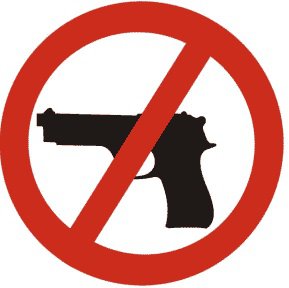1. America has a gun problem. Study after study after study has found that the spread of guns in the United States has led to more people being killed by guns. The old “more guns, less crime” theory has been conclusively debunked. The question now is how to limit the spread of guns, particularly by better mechanisms to prevent people who would commit murder and other gun crimes from getting them.
2. The National Rifle Association is not interested in real measures to address it. In today’s hearing, NRA Executive Vice President Wayne LaPierre will say that we have to “be honest about what works,” but his organization has proven uninterested in any real reform beyond its own quixotic quest to put more guns in schools. The NRA refused to meet with the President to discuss his framework for gun violence prevention and has spent the days post-Newtown blaming everything other than guns for the deaths they cause. NRA members don’t share the organization’s absolutist positions.
UPDATE: Moments ago, in the hearing, LaPierre even came out against closing the loophole on background checks for guns bought online or at gun shows. Even 80% of NRA members support this measure, showing how far out of the mainstream LaPierre is.
3. There’s real evidence that gun regulation can work. Research comparing murder rates across states found that those with stricter gun regulation found that “[f]irearm deaths are significantly lower in states with stricter gun control legislation.” These regulations include the main measures being debated today — universal background checks, a strengthened assault weapons ban, and limits on high-capacity magazines. Strengthened background checks and oversight over gun dealers has in particular proven effective — one “study using crime gun trace data from 54 U.S. cities” found that “strong regulation and oversight of licensed gun dealers, regulation of gun sales by private sellers, and permit-to-purchase licensing systems (which require potential gun purchasers to apply for a license directly with a law enforcement agency, where they are typically photographed and fingerprinted) were each associated with significantly fewer guns that were diverted to criminals.”
4. This debate isn’t about the Second Amendment. Since the Supreme Court’s 2008 ruling inD.C. v. Heller, banning the ownership of guns “in common use” has been legally impossible. That’s why none of the proposed regulations ban handguns or most shotguns and hunting rifles. Justice Scalia’s ruling specifically allows restrictions on “dangerous and unusual” weapons and stipulatesthat “nothing in our opinion should be taken to cast doubt on longstanding prohibitions on the possession of firearms by felons and the mentally ill, or laws forbidding the carrying of firearms in sensitive places such as schools and government buildings, or laws imposing conditions and qualifications on the commercial sale of arms.”
5. This is the best chance for Congressional action on guns since 1994. The massacre at Sandy Hook Elementary has galvanized American public opinion on guns in a way unlike any other event in recent memory, with public opinion firmly behind new regulations — 90 percent of Americans, for example, support expanded background checks. And while House and Senate Republicans still appear firmly opposed to most of the proposed regulations, key Republicans like Rep. Paul Ryan and Sen. Tom Coburn have indicated openness to action on background checks.

